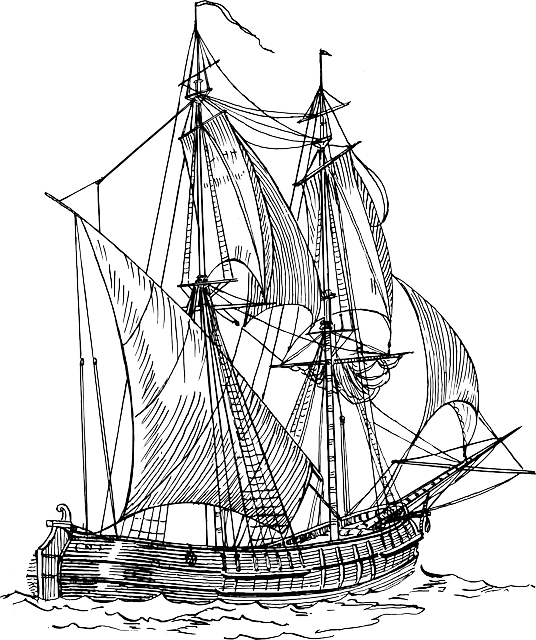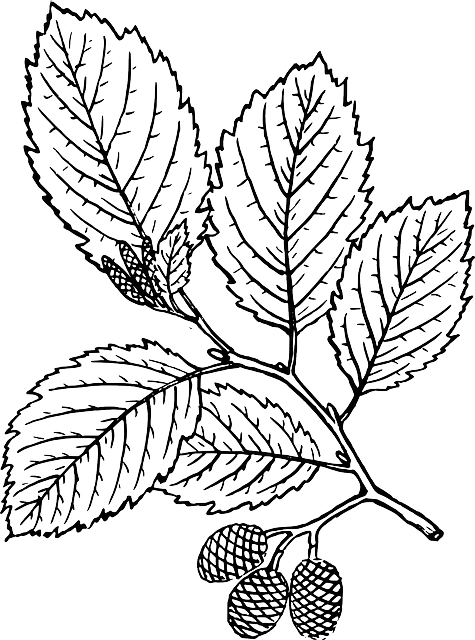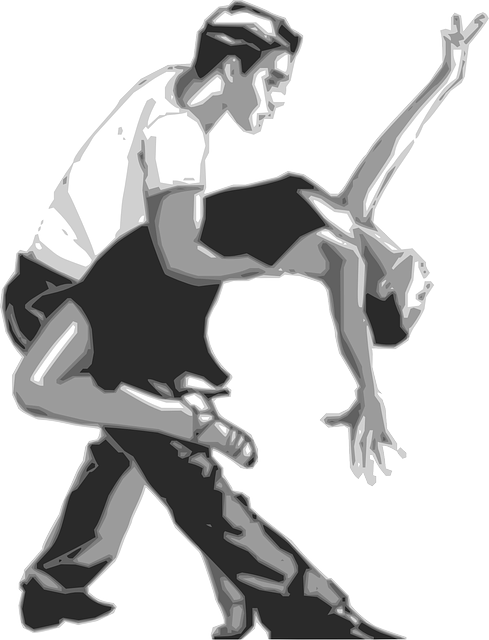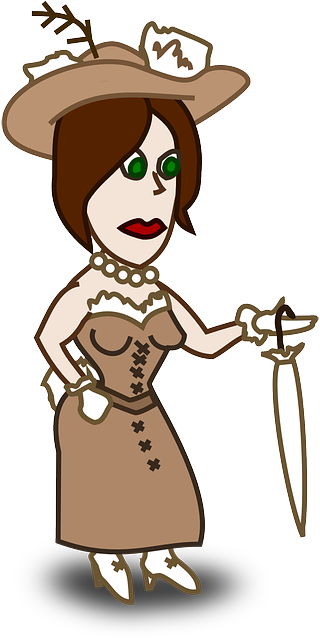مملكة البوسنة
|
مملكة البوسنة
بوسانسكوكراليڤستڤو
Босанско краљевство | |||||||||||
|---|---|---|---|---|---|---|---|---|---|---|---|
| 1377–1463 | |||||||||||
الفهم
Coat of arms
| |||||||||||
|
توسع الدولة البوسنية في العصور الوسطى
| |||||||||||
| العاصمة |
ڤيسوكو Jajce Bobovac |
||||||||||
| اللغات الشائعة | البوسنية | ||||||||||
| الدين | الكنيسة البوسنية، الأرثوذكسية الشرقية، الكنيسة الكاثوليكية الرومانية | ||||||||||
| الحكومة | ملكية إقطاعية | ||||||||||
| ملك | |||||||||||
• 1377–1391 |
تڤرتكوالأول (الأول) | ||||||||||
• 1461–1463 |
ستفان توماشڤتش (الأخير) | ||||||||||
| الحقبة التاريخية | العصور الوسطى | ||||||||||
• تتويج تڤرتكوالأول |
26 October 1377 | ||||||||||
• الفتح العثماني |
5 يونيو1463 | ||||||||||
| |||||||||||
مملكة البوسنة (بوسنية: كراليڤينا بوسنا / Краљевина Босна)، أوالمملكة البوسنية (بوسانسكوكراليڤستڤو / Босанско краљевство)، كانت مملكة قروسطية من سلاڤ الجنوب تطورت من Banate of Bosnia (1154–1377). Bosnia experienced de facto independence in the 13th and 14th centuries despite nominally being a part of the Hungarian Crown Lands. Although Hungarian kings viewed Bosnia as under their sovereignty, Bosnian bans and kings acted independently in conducting diplomacy, judicial system, granting towns and estates, minting coins, exploiting its natural resources, and making trading agreements with other countries and independent cities. After the reign of ban Kulin, rulers of Bosnia had enjoyed virtual independence from Hungary for much of its history and expanded it's rule in Serbia, Croatia and Dalmatia.
King Tvrtko I (r. 1353–91) acquired portions of western Serbia and most of the Adriatic coast south of the Neretva river. During the late part of his reign, Bosnia briefly became one of the strongest states in the Balkans peninsula. However, feudal fragmentation remained strong in Bosnia, and after his death the country lost its importance. The Ottoman Empire annexed portions of eastern Bosnia in the 1440s and 1450s and went on to conquer Herzegovina until the last fortress fell in 1481. After the recapture of Jajce by the Hungarians, under command of ban Petar Keglević (1521-1525) and captain Mihailo Turek, Jajce successfully repelled three more Ottoman assaults (in 1521, 1524. and 1525), but finally surrendered in 1527, after the battle of Mohacs, and was incorporated in the Ottoman Sanjak of Bosnia.
خلفية
The Banate of Bosnia was a medieval state comprising at its peak most of what is today Bosnia and Herzegovina, as well as parts of Dalmatia (in Croatia), Serbia and Montenegro. Although nominally in vassalage to the Kingdom of Hungary, it was a de facto independent state. The Banate of Bosnia existed until 1377, when it was elevated into a kingdom when Tvrtko I crowned himself and elevated the rank of his state, following the death of the last Serbian Emperor from the Nemanjić dynasty, which had no heir to the throne in 1371. Tvrtko had the strongest claim to the royal title at that time, and even if he had no practical means to rule Serbia, it was a perfect opportunity for him to elevate his rank of Bosnia to the kingdom. Tvrtko thus became the first King of Bosnia, with full legitimacy as the crown he took was sent from Pope Honorius III to Stefan the First-Crowned in 1217. He was also King of Serbia, and in that way, legal basis for crowning was achieved, which was accepted even by his formal sovereign Louis I.
التاريخ
By the mid-14th century, Bosnia reached its peak under Ban Tvrtko I of the House of Kotromanić, who was officially crowned on 26 October 1377. as "Stephen, King of Serbs, Bosnia and Littoral" ("Stefan, kralj Srbljem, Bosni i Primorju"). By having done so, he became a ruler of the newly proclaimed Kingdom of Bosnia, a state that followed the Banate of Bosnia. At its peak the Kingdom became one of the most influential and powerful states in the Balkan peninsula prior to Ottoman conquest.
Throughout the Middle Ages, Herzegovina was made up of several smaller polities: Zahumlje (Hum), centered around the town of Blagaj, and Travunia, centered on the town of Trebinje. These statelets were in periods ruled by semi-independent princes, mostly under suzerainty of the Serbian medieval monarchy. Their territories included modern Herzegovina and parts of Montenegro and southern Dalmatia. The name Herzegovina was adopted when Stjepan Vukčić Kosača, the "Duke of St. Sava" asserted its independence in 1435–48. The assembly of these noblemen was called stanak and was quite influential.
حكم تڤرتكوالأول
Bosnia reached its peak under Ban Tvrtko I, a member of the Kotromanić dynasty, who came to power in 1353. In 1372, Tvrtko formed an alliance with Prince Lazar Hrebeljanović, one of the regional lords in the territory of the disintegrated Serbian Empire. The next year, Tvrtko and Lazar attacked the domain of Nikola Altomanović, who was the most powerful Serbian noble at the time. After defeating Altomanović, they divided his lands, except for his littoral districts of Dračevica, Konavle, and Trebinje, which were seized by Đurađ I Balšić, the Lord of Zeta. Tvrtko received parts of Zahumlje, the upper reaches of the Drina and Lim rivers, as well as the districts of Onogošt and Gacko. This acquisition included the important Serbian Orthodox monastery of Mileševa (which held the relics of Saint Sava, the first Serbian Archbishop).
In 1377, Tvrtko took the littoral districts from Balšić. That year, on 26 October, he was crowned King of 'Serbs, Bosnia, the Primorje (Seaside), and the western lands'. The acquisition of Serbian territory, including the important Monastery of Mileševa, combined with the fact that Tvrtko's grandmother had been a member of the Nemanjić dynasty prompted Tvrtko into also having himself crowned 'King of Serbia' thus asserting his pretensions to the Serbian throne. This was made possible by the royal Nemanjić line having died out with Uroš in 1371. The crown was sent to him by his sovereign Hungarian king Louis of Anjou. According to plurality of recent works, in historiography represented by scholars like Čošković, Anđelić, Lovrenović, Filipović, ceremony itself was conducted in Mile near Visoko in the church which was built in time of Stephen II Kotromanić's reign, where he was also buried alongside his uncle Stjepan II. In contrast, some earlier historiographers, mostly represented by western scholars, consider that he was crowned in the Orthodox Monastery of Mileševa, by the Metropolitan of Mileševa.
However, after the defeat of Nikola Altomanović, Prince Lazar had emerged as the most powerful lord on the territory of the former Serbian Empire. He wanted to reunite the Serbian state, and the Serbian Orthodox Church saw him as most fitted to succeed the Nemanjić dynasty. The Church, which was the strongest cohesive force among the Serbs at the time, did not support Tvrtko's aspirations in this regard.
By 1390, Tvrtko I expanded his realm to include a part of Croatia and Dalmatia, and expanded his title to King of Serbs, Bosnia, Dalmatia, Croatia and the Littoral. Tvrtko's full title listed subject peoples and geographical dependencies, following the Byzantine norm. At the peak of his power, he was "King of Bosnia, Serbia, Croatia, Hum, Usora, Soli, Dalmatia, Donji Kraji".
In the last months of his reign, Tvrtko devoted himself to solidifying his position in Dalmatia and to plans for the taking of Zadar, the only Dalmatian city that had evaded his rule. He offered an extensive alliance to Venice, but it did not suit the republic's interests. Meanwhile, Tvrtko was also fostering relations with Albert III, Duke of Austria. By the late summer of 1390, a marriage was expected to be contracted between the recently widowed King and a member of the Austrian ruling family, the Habsburgs. Hungary remained the focus of Tvrtko's foreign policy, however. Although they did not recognize each other as kings, Tvrtko and Sigismund started negotiating a peace in September. Sigismund was in the weaker position and likely ready to make concessions to Tvrtko when his ambassadors arrived at Tvrtko's court in January 1391. The negotiations were probably never concluded, as Tvrtko died onعشرة March.
وفاة تڤرتكووالانحدار
While the Kingdom of Bosnia retained its standing among neighbouring states in the immediate aftermath of Tvrtko I's death, it was already during Dabiša's reign that conditions within the state started deteriorating. He successfully resisted Hungary, Naples, and even Ottoman Turks. In the first years of his reign, Dabiša successfully maintained the integrity of Tvrtko's Kingdom of Bosnia.
The latter part of his reign, however, saw the ascent of magnates and considerable loss of Bosnia's territory and influence. The nobility grew stronger and for the first time acted independently of the king, starting with the Zachlumian Sanković noble family. Dabiša curbed the Sanković power, but the trend was irreversible and eventually led to the weakening of the royal authority.Hrvoje Vukčić Hrvatinić, the kingdom's leading magnate came into agreement with Sigismund and Mary but remained loyal to Dabiša. By June 1394, King Dabiša was in open conflict with John Horvat, a fervent supporter of Ladislaus and enemy of Sigismund. He ordered that men from his islands of Brač, Hvar, and Korčula assist in the siege of Omiš, a city ruled by Horvat. Sigismund, who had been amassing an army since April, took advantage of the discord.
The Battle of Dobor saw John Horvat's defeat and execution as well as destruction of the eponymous town on the river Bosna by Sigismund's troops. Soon thereafter Dabiša submitted to Sigismund and resigned Croatia and Dalmatia to the Hungarian king and, with the agreement of his vassals, recognized him as his feudal overlord as well as heir designate to the Bosnian throne. It is not clear what prompted Dabiša to agree to such harsh terms. In return, as evident from a treaty issued in July 1394, Sigismund included Dabiša among the highest ranking Hungarian officials and named him ispán (count) of Somogy.
Despite an auspicious start, Dabiša's reign ended with the Kingdom of Bosnia displaying first signs of decay. Much of Tvrtko's extraordinary legacy was lost in the summer of 1394, and the state resumed its previous boundaries. Dabiša left the Bosnian state more dependent on Hungary than ever before, and the kingdom's influence in the Balkans waned. Despite initially consenting to his agreement with Sigismund, it was Dabiša's widow, Helen, who succeeded in ascending the throne with the support of the magnates.
In 1394, Helen agreed to Dabiša's decision to designate King Sigismund of Hungary as his heir. When Dabiša died onثمانية September the following year, however, the leading noblemen – Grand Duke Hrvoje Vukčić Hrvatinić, Prince Pavao Radinović, Duke Sandalj Hranić and Juraj Radivojević – refused to honor the agreement Dabiša had made with Sigismund. Sigismund raised an army and marched to nearby Syrmia with the aim to claim the Bosnian throne, but the noblemen convoked a stanak and elected Helen as Dabiša's successor. Not willing to engage the united nobility in war, Sigismund withdrew; the death of his wife Mary, heir of Hungary and cousin of Dabiša, made his position too precarious to attack Bosnia, as did the defeat by the Ottomans at the Battle of Nikopolis. By mid-December 1395, Helen had successfully consolidated her grasp on the throne, and the pretender was killed by Sigismund's supporters in 1396, never having seriously threatened the Queen. The emancipation of Bosnian nobility reached a peak during Helen's reign. Having become virtually autonomous, her vassals engaged in internal warfare which weakened the Kingdom and precluded its participation in regional politics.
By March 1398, Bosnia was beset by an internal strife. It seems that Queen Helen's family, the Nikolić, attempted to take further advantage of their royal relations and free themselves from subordinacy to the House of Kosača to become immediate vassals of the monarch. This may have been the reason for an uprising against Helen. She maintained a great deal of support in April, when Ragusa paid its tribute to her. The last to remain on her side were the Radivojević noble family, including Helen's grandson-in-law Juraj. Byعشرة May, however, her husband's kinsman Ostoja was enthroned as the new King of Bosnia.
المعارك الداخلية بين أوستويا وتڤرتكوالثاني
Ostoja was brought to power by the forces of Hrvoje Vukčić, (Ban of Croatia, Grand Duke of Bosnia and a Herzog of Split), which deposed Queen Jelena Gruba in 1398. In 1403 he sided with King Ladislaus of Naples in his plights against the Hungarian King Sigismund, Bosnia's liege. King Ostoja led a war against the Republic of Dubrovnik, a Hungarian vassalage that year. In 1404, the Bosnians under Hrvoje Vukčić replaced him by his brother تڤرتكوالثاني because of his pro-Hungarian views. He had to flee to Hungary, after a stanak in Mile, Visoko. Ostoja tried to reclaim the throne with Hungarian support, but in June 1404, Tvrtko's supporters defeated a Hungarian army and thus prevented Ostoja from reclaiming the crown, but the chief royal residence of Bobovac and the Usoran town of Srebrenik were captured and restored to Ostoja. All major Bosnian noble families remained loyal to Tvrtko, while Ostoja functioned as Sigismund's puppet whose territory included little more than Bobovac. The fortress, however, housed the crown, which Tvrtko was not able to reach.
Following a few minor disputes with the maritime republics of البندقية وراگوسا على Konavli and Pomorje, Tvrtko gained recognition as legitimate king from both states. By 1406, Ostoja was losing what little support he had left in Bosnia, with the nobility now unanimously favouring Tvrtko, but the former king's decision to remain in the country continued to trouble Tvrtko. Ragusans described the beginning of Tvrtko II's reign as more tumultuous than anything "since the Flood", but he soon succeeded in uniting the country by bringing together his feuding vassals.
Hungarian attacks on Bosnia took place annually, making Tvrtko's life "a constant hassle". In 1408, Hungarian King Sigismund managed to defeat the Bosnian nobility and King Stephen Tvrtko II and restore Ostoja to the throne in 1409. 170 minor noblemen were captured and killed in Dobor – tossed over the city walls. Tvrtko is said to have been captured as well, but this does not appear to be true, as he demanded the customary tribute from the Ragusans in February 1409. The hostilities continued until the end of November, with Tvrtko retreating southwards with his noblemen and resisting Hungarian attacks, which enabled Ostoja to reestablish control over Central Bosnia.
Tvrtko remained on the throne until mid-1409, when Ostoja prevailed. Sigismund's claim became untenable, but Bosnians acknowledged his overlordship over Ostoja; only Tvrtko refused to submit to the King of Hungary. He appears to have evaded capture by Hungarian troops by fleeing to the mountains of northern Zachlumia. King Stephen Ostoja ended the decade-long dispute with the Hungarians but recognizing the suzerainty of the Hungarian crown and in 1412 visited the Hungarian throne in Buda together with the rest of the Bosnian and Serbian nobility including Serbian Despot Stefan Lazarević. After that Tvrtko faded into obscurity and had no part in Bosnian affairs for several years.
التدخل الهجري والعهد الثاني لتڤرتكوالثاني
First Turkish troops brought terror to Bosnia in May 1414; in August they also brought the deposed monarch, Tvrtko, and set him up as anti-king. His alliance with the Turks may be due to their mutual hostility towards Sigismund. Pavle Radenović immediately declared for Tvrtko, but no other major nobleman appears to have followed his example – not even Hrvoje. While Tvrtko hoped for a Turkish victory, Ostoja expected that a Hungarian triumph would rid him of Turkish raiders and secure his position against both his rival and his ambitious magnates. The Battle of Doboj in August 1415 saw the disastrous defeat of Sigismund's army. Contrary to expectations, however, the Turks recognized Ostoja as legitimate king. Tvrtko lost his ground, while the united Bosnians for the first time shifted their allegiance from Hungary to the Ottomans.
Ostoja died in September 1418. Despite expectations that Tvrtko would take over, Ostoja's son Stephen was elected king. When the Turks broke into the kingdom in early 1420, Tvrtko once again accompanied them and installed himself as anti-king. Sandalj immediately declared for him. Fearing the Ottomans, Sandalj's example was soon followed by other noblemen. In June Tvrtko convoked a stanak, and Ragusa recognized him as king. He had support of almost all nobility in Visoko, including voivod Vukmir, mayor Dragiša, knez Juraj Vojsalić, knez Pribić, knez Radič Radojević, knez Batić Mirković, knez Juraj Dragičević, knez Petar Klešić, voivod Ivko, and voivod Pavao Jurjević. By the end of the year Tvrtko had completely ousted Stephen, who continued to advance his claim until the summer of 1421. He appears to have died soon after.
The internal troubles forced the Ottomans to withdraw their troops from Bosnia, which enabled Tvrtko to strengthen his hold on the kingdom and for its economy to recover. Tvrtko's second accession had to be legitimized with a new coronation, which took place during a stanak in August 1421. Tvrtko's second reign was marked by his quick resolution to restore royal authority and the king's pre-eminence among Bosnia's feudal rulers. With Hrvoje and Pavle gone, and Sandalj preoccupied by conflict with Pavle's sons, Tvrtko was able to significantly expand the royal domain. In 1422 Tvrtko signed a beneficial trade treaty with the Republic of Venice in December 1422, and discussed a range of plans for joint military action against Sigismund in Dalmatia.
Tvrtko's association with Venice bothered not only Ragusa, but also the Turks; the former resented losing their monopoly on trade, while the latter's poor relationship with Venice was the result of territorial dispute over Albania and Zeta. The Turks proceeded to raid Bosnia in the spring of 1424, just enough to make it clear to Tvrtko that close relations with Venice would not be tolerated. Tvrtko understood that Venice would not be able to provide him with help against the Turks, and thus slowly dismantled their alliance. In 1425, Tvrtko realized that he needed a strong ally in the event of further Turkish attacks. The Ottomans responded with severe attacks that forced Tvrtko to accept their suzerainty and to agree to paying an annual tribute.
In 1432, Stefan Lazarević's successor Đurađ, Sandalj and the Ottomans helped Radivoj, the elder illegitimate son of the long-deceased Ostoja, lay claim to the throne and take control of much of the country. Tvrtko's only noteworthy support came from Hrvoje's nephew and successor, Juraj Vojsalić, and he thus managed to retain only the central and northwestern Bosnia. Tvrtko retreated to Visoko, but soon found that Sandalj had become too ill to support Radivoj's cause. After years of pleading for their help, Tvrtko finally saw Hungarians march into Bosnia in mid-1434. They recovered for him Jajce, Hodidjed, Bočac and the Komotin Castle, but he lost it all as soon as they retreated. In fact, he himself appears to have left with the troops on their way back to Hungary, as he is known to have resided at the court in Buda in 1435. Radivoj ceased being a threat when he lost the Ottoman support that year, while Sandalj's death presented Tvrtko with a new and more vital rebellious vassal in the form of Sandalj's nephew and successor, Stjepan Vukčić Kosača.
Radivoj styled himself as King of Bosnia for the remainder of Tvrtko II's reign. He was nominally supported by the Turks and by Stjepan Vukčić Kosača; they could have easily deposed Tvrtko in his favour if they wished, but it appears that their only goal was to weaken and divide Bosnia for their future benefit. Tvrtko died childless in November 1443, having expressed wish to be succeeded by his politically inactive and until then rather obscure cousin Thomas, Radivoj's younger brother and likewise an illegitimate son of Ostoja. Tvrtko II maintained himself on the Bosnian throne longer than any of the monarchs who followed Tvrtko I. He also did more to restore royal dignity and centralize the state than any other, leaving a strong mark on Bosnia's politics, economy and culture.
حكم توماس
An illegitimate son of King Ostoja, Stephen Thomas succeeded King Tvrtko II, but his accession was not recognized by the leading magnate of the Kingdom of Bosnia, Stjepan Vukčić Kosača. The two engaged in a civil war which ended when the King repudiated his wife, Vojača, and married the insubordinate nobleman's daughter, Catherine. Thomas and his second wife, both raised in the Bosnian Church tradition, converted to Roman Catholicism and sponsored construction of churches and monasteries throughout the kingdom.
Throughout his reign, Thomas waged a war with the Serbian Despotate over the lucrative mining town of Srebrenica and its surroundings, in addition to (or in conjunction with) multiple conflicts with his father-in-law. Having failed to expand into Croatia proper, Thomas turned again to the east in 1458, arranging a match between his son Stephen and the Serbian heiress Helena. Bosnian control over the remnants of the Serbian Despotate lasted merely a month before the Ottoman conquest of the state. King Thomas' failure to defend Serbia permanently damaged his reputation in Europe. Wishing to improve his image among Europe's Catholics, Thomas turned against the Bosnian Church, thus becoming the first ruler of Bosnia to engage in religious persecution.
الدمار
Stephen Tomašević succeeded his father on the throne following the latter's death in July 1461 and became the first Bosnian king to receive a crown from the Holy See. Under King Stjepan Tomašević, betrayed and left to fend for itself by other European powers, especially his sovereign Matthias Corvinus, who held nominal rule of Bosnia, it fell in 1463 and became the westernmost province of the Ottoman Empire as they beheaded Stjepan Tomašević in Carevo polje, Jajce after Ottomans besieged it, although de facto independent Herzegovina province fell to the Empire in 1482, and Matthias Corvinus retook the northern half of the Kingdom, organizing it in two defensive Banovina's, Jajce and Srebrenik. It took another century for the western parts of today's Bosnia to succumb to Ottomans. After the fall of the kingdom, Catherine of Bosnia escaped to Rome on horses by fooling the Ottomans in which way she went. She stated that she was leaving the country to see her sons or to the visit the Holy See.[]
الثقافة والدين
The religion of the original population of Bosnia and Herzegovina was mixed: there were Catholic and Orthodox Christians, but most of the indigenous population simply called themselves Bosnians (or "Bošnjani"), belonging to the so-called Bosnian Church. The majority of knowledge on this church comes from outside non-adherent sources and its exact nature is a subject of much scholarly debate, particularly around its possible dualist teachings. It was accused by the Catholic and Orthodox authorities of heresy and being linked to the Bogomils (Patarenes). Before the fall, most of the population were Christian.
The bans and kings of Bosnia were proclaimed Catholics during their reign,[] except for Stjepan Ostoja who showed some interest in the Bosnian Church while he was on the throne. There were, however, several important noblemen who were "Krstjani" (or "Christians"), such as Hrvoje Vukčić, the Radenović-Pavlović family, Sandalj Hranić, Stjepan Vukčić, and Paul Klešić. It was common for the Holy See to have the Bosnian rulers renounce any relation to the Bosnian Church or even perform conversions, in return for support. After Stephen Thomas started persecuting Bosnian Church followers, they responded in they traditional stronghold in Visoko and in 1450 demolished Franciscan monastery that was in Mile. However, it was rebuilt shortly after. King Thomas earned the nickname "damned king" for his actions against adherents of Bosnian Church.
الاقتصاد
Important mining towns like Fojnica, Kreševo, Olovo, Srebrenica, Dusina, Kamenica, Deževice are beginning to show up in contemporary sources at the time of Tvrtko I reign. Srebrenica was very lucrative town with its silver mines. Caravan trade was frequent between Republic of Ragusa and Bosnia where Ragusan merchants had trading colonies in Podvisoki, Fojnica, Srebrenica, Kreševo and others. Economic activity allowed for creation of new župa's like Nenavište in Posavina and Trebotić in Podrinje. Via Narenta and Via Drine were crucial for economy of Bosnia as it provided access to Drijeva and Dubrovnik, which in turn provided access to Adriatic sea. Tvrtko founded the youngest medieval town on the eastern Adriatic coast. In early 1382, Tvrtko constructed a new fortress in the Bay of Kotor and decided that it should form the basis of a new salt trading center. Initially named after Saint Stephen, the city came to be known as Novi (meaning "new").
Vlachs in medieval Bosnia carried out much of the traffic between inland and coastal cities. With their caravans, led by kramar, mostly composed of horses numbering between 10–100, they conducted a large part of the trade between inland and coastal cities. Sources cite biggest caravan trade between Podvisoki and Ragusa in 1428 on 9. August, Vlachs committed to Ragusan lord Tomo Bunić, that they will with 600 horses deliver 1500 modius of salt. At the end of 14. century merchants from Podvisoki took part in slave trade. It was recorded, that on November 1389 Bogovac Vukojević (Bogaueç Vochoeuich Bossinensis de Souisoch) traded small boy Milko for the price of أربعة ducats.
In twilight years of Bosnian kingdom King Thomas engaged in vigorous commerce and made business deals with Dalmatian traders. He relied heavily on his silver mining, but profited most from his salt trade monopolies. Sultan Mehmed started exerting an even greater pressure on Bosnia. In addition to financial extortion, Bosnia under Thomas was now forbidden to export silver, which Mehmed claimed for himself. This severe crippling of the Bosnian economy suffocated the kingdom. His successor Stephen Tomašević tried to improve the situation, and Bosnian economy did became stronger than ever during his reign collecting more profit from the flourishing metalworking trade.
Most important customs were in Drijeva, Vrabač, Deževice, Podvisoki, Trebinje, Foča, Goražde, Borač, Višegrad, Olovo, Srebrenica. Collecting customs was overseen by protovestiarios who were more often than not Ragusan citizens.
قائمة الحكام
نطقب:History of Bosnia
- Tvrtko I (1377 - 1391)
- Stjepan Dabiša (1391 - 1395)
- Jelena Gruba (Helen of Bosnia) (1395 - 1398)
- Stjepan Ostoja (1398 - 1404; 1409 - 1418)
- Tvrtko II (1404 - 1409; 1421 - 1433)
-
Stjepan Ostojić (1418 - 1420)
- Radivoj Ostojić (1421 - 1433)
- Stjepan Tomaš (1435 - 1461)
- Stjepan Tomašević (1461 - 1463)
الملكات البوسنيات
- Dorothea of Bulgaria (1377 - ?), wife of Tvrtko I,
- Jelena Gruba (1391 - 1395), wife of Stjepan Dabiša
- Vitača, first wife of Stjepan Ostoja
- Kujava Radenović (1399 - 1415), second wife of Stjepan Ostoja
- Jelena Nelipčić (1416 - 1418), third wife of Stjepan Ostoja, former wife of Hrvoje Vukčić Hrvatinić
- Dorothy Garai, wife of Tvrtko II
- Vojača (1443-1445), supruga Stjepana Tomaša
- Catherine of Bosnia (1446 - 1461), wife of Stjepan Tomaš
- Maria of Serbia (1461 - 1463), wife of Stjepan Tomašević
المصادر
- Klaić, Nada (1994) [1994]. Srednjovjekovna Bosna. Zagreb: Eminex.
- Ćirković, Sima (1964). Историја средњовековне босанске државе (in Serbo-Croatian). Srpska književna zadruga.CS1 maint: unrecognized language (link)
- Fine, John Van Antwerp, Jr. (1994). The Late Medieval Balkans: A Critical Survey from the Late Twelfth Century to the Ottoman Conquest. Michigan: University of Michigan Press. ISBN .
- Anđelić, Pavao (1980). Anđelić, Pavao, Krunidbena i grobna crkva bosanskih vladara u Milima (Arnautovićima) kod Visokog" 183-247 (in Serbo-Croatian). Glasnik Zemaljskog muzeja XXXIV/1979., Zemaljski muzej Bosne i Hercegovine, Sarajevo, 1980.CS1 maint: unrecognized language (link)
- Vojna enciklopedija (1970–76),عشرة volumes, Vojno izdavački zavod Beograd, book 3, p. 798-799, article Jajce (in Serbo-Croatian)
- Vego, Marko (1957). Naselja bosanske srednjovjekovne države (in Serbo-Croatian). Sarajevo: Svjetlost. pp. 127–129.CS1 maint: unrecognized language (link)
- Malcom, Noel (1994). . Reprinted by permission of the author and New York University Press. New York University Press. ISBN .
- Velkonija, Mitja (2003). . Texas A&M University Press. ISBN .
- Bataković, Dušan T. (1996). . Dialogue Association.
- Kovačević Kojić, Desanka (1961). . Naučno društvo NR Bosne i Hercegovine, 1961.
- Vego, Marko (1982). . Sarajevo: Svjetlost.
المراجع
- ^ Vego 1982, p. 124.
- ^ Fine, John V. A.; Fine, John Van Antwerp (1994). (in الإنجليزية). University of Michigan Press. ISBN .
- ^ Klaić 1994, pp. 34, 42, 55, 58, 71, 76, 105, 116, 119, 169, 172, 173, 181, 183, 186, 221.
- ^ Jean W Sedlar (1 March 2011). . University of Washington Press. pp. 23–. ISBN .
- ^ Fine 1994, pp. 44, 148.
- ^ Richard C. Frucht (2005). . ABC-CLIO. p. 631. ISBN .
- ^ Petrovich, Michael Boro; Division, Library of Congress Slavic and Central European (1974-01-01). (in الإنجليزية). U.S. Government Printing Office. ISBN .
- ^ Dedijer, Vladimir (1974). (in الإنجليزية). McGraw-Hill Book Co.
- ^ (in الإنجليزية). BRILL. 2019-02-11. ISBN .
- ^ Vego 1982, p. 113.
- ^ Fine 1994, p. 384.
- ^ Fine 1994, pp. 392–393.
- ^ Singleton, Frederick Bernard (1985). A Short History of the Yugoslav Peoples. Cambridge University Press. p. 20. ISBN .
- ^ Dizdar 1969, p. 118-119 https://postimg.org/image/5ix5tlwxf/[].
- ^ Velikonja 2003, p. 33.
- ^ Mile declared as national monument Archived ثلاثة February 2008 at the Wayback Machine.. 2003.
- ^ Anđelić Pavao, Krunidbena i grobna crkva bosanskih vladara u Milima (Arnautovićima) kod Visokog. Glasnik Zemaljskog muzeja XXXIV/1979., Zemaljski muzej Bosne i Hercegovine, Sarajevo, 1980,183-247
- ^ Dr. Željko Fajfric: Kotromanići Archived 23 October 2013 at the Wayback Machine..
- ^ Fine 1994, pp. 387–389.
- ^ Mihaljčić, Rade (2001) [1984] (in Serbian), Belgrade: Srpska školska knjiga; Knowledge, p. 75, ISBN 86-83565-01-7
- ^ Fine, John V. A.; Fine, John Van Antwerp (1994). (in الإنجليزية). University of Michigan Press. ISBN .
- ^ Ćirković 1964, p. 164.
- ^ Ćirković 1964, p. 165.
- ^ Ćirković 1964, p. 171.
- ^ Ćirković 1964, p. 173.
- ^ Ćirković 1964, p. 174.
- ^ Engel 1996, p. 176.
- ^ Ćirković 1964, p. 176.
- ^ Ćošković 2005.
- ^ Fine 1994, p. 458.
- ^ Ćirković 1964, p. 184.
- ^ Fine 1994, p. 459.
- ^ Ćirković 1964, p. 185.
- ^ Živković 1981, p. 25.
- ^ Fine 1994, p. 463-464.
- ^ Živković 1981, p. 41.
- ^ Živković 1981, p. 42.
- ^ Živković 1981, p. 47.
- ^ Živković 1981, p. 59.
- ^ Živković 1981, p. 61.
- ^ Živković 1981, p. 62.
- ^ Živković 1981, p. 68.
- ^ Živković 1981, p. 71.
- ^ Živković 1981, p. 72.
- ^ Živković 1981, p. 76.
- ^ Živković 1981, p. 79.
- ^ Živković 1981, p. 82.
- ^ Živković 1981, p. 84.
- ^ Fine 1994, p. 472.
- ^ Živković 1981, p. 9.
- ^ Mark Pinson (1996). . Harvard CMES. pp. 4–. ISBN .
- ^ Florin Curta (31 August 2006). . Cambridge University Press. pp. 433–. ISBN .
- ^ Čošković, Pejo. "Pejo Ćošković - Crkva bosanska u XV. stoljeću". Institut za istoriju, Sarajevo (in البوسنية): 81.
- ^ Okiç, Les Kristians, 128.
- ^ Vego 1957, p. 129.
- ^ Vego 1957, p. 128.
- ^ Malcolm 1994.
- ^ „Crainich Miochouich et Stiepanus Glegieuich ad meliustenendem super se et omnia eorum bona se obligando promiserunt ser Thome de Bona presenti et acceptanti conducere et salauum dare in Souisochi in Bosna Dobrassino Veselcouich nomine dicti ser Thome modia salis mille quingenta super equis siue salmis sexcentis. Et dicto sale conducto et presentato suprascripto Dobrassino in Souisochi medietatem illius salis dare et mensuratum consignare dicto Dobrassino. Et aliam medietatem pro eorum mercede conducenda dictum salem pro ipsius conductoribus retinere et habere. Promittentes vicissim omnia et singularia suprascripta firma et rata habere et tenere ut supra sub obligatione omnium suorum bonorum. Renuntiando” (9. August 1428), State archive, Ragusa Republic, Series: Diversa Cancellariae, Number: XLV, Foil: 31 verso.
- ^ „Ego quidem Bogaueç Vochoeuich Bossinensis de Souisochi confiteor quod sponte et ex certa scientia dedi, vendidi et tradidi magistro Johanni condam magistri Marchi de Papia unum meum seruum puerulum etatis annorum nouem vel circha nomine Milcho de genere et nactione Bossinensium, pro precio ducatorum auri quatuor, quos confiteor integre recepisse” (9. November 1389.), State archive Ragusa Republic, Series: Diversa Notariae, Number: X, Foil: 77.
- ^ Ćirković 1964, p. 292.
- ^ Ćošković 2009.
- ^ Ćirković 1964, p. 312.
- ^ Ljubez 2009, p. 149.
وصلات خارجية
- F. Miklosich, Monumenta serbica spectantia historiam Serbiae, Bosnae, Ragusii, Viennae 1858, p. 1-2
















